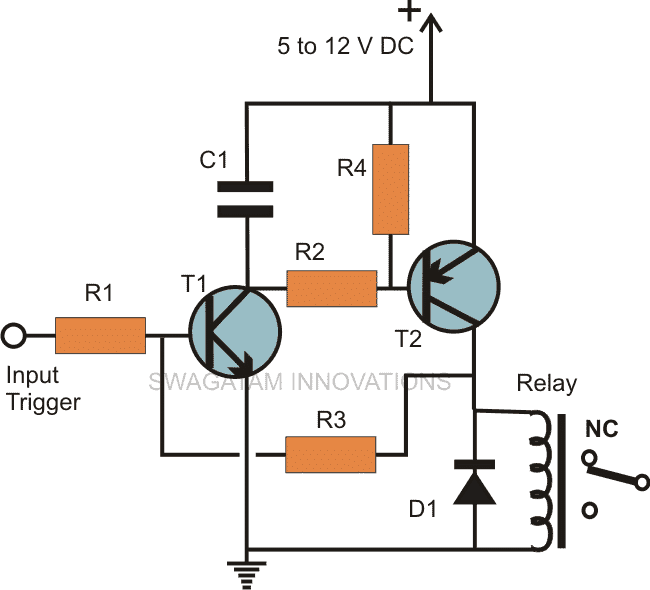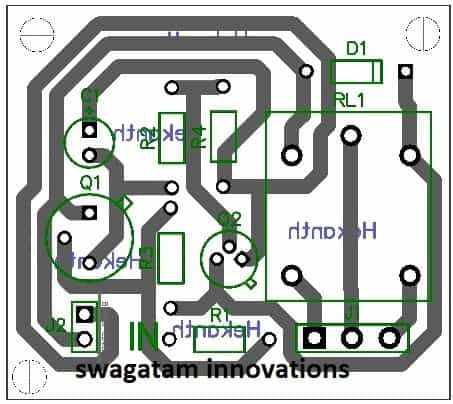In this article, we’ll explore how to build a basic transistor latch circuit using only two BJTs (Bipolar Junction Transistors) and some resistors.
Introduction
A transistor latch is a type of circuit which, once activated by a brief high signal, maintains a consistently high output. It remains in this ‘on’ state as long as it has power, even if the initial signal disappears.
Such a circuit is handy for maintaining or ‘latching’ the output status of a circuit following an input prompt, keeping it stable even when the input is no longer present.
The sustained output can then be utilized to control a device, whether it’s through a relay, SCR (Silicon Controlled Rectifier), Triac, or directly by the transistor thats part of the output.
How it works
This article explains how to build a basic latch circuit with transistors, which is a low-cost project that only needs a few transistors and some basic parts.

The diagram shows two transistors, T1 and T2, set up so that T2 copies what T1 does. If T1 gets a signal to start, T2 will also start, and if T1 stops, T2 will stop too.
T2 also helps to strengthen the signal making sure even tiny signals get noticed.
Heres what happens: When a little positive signal comes to T1, T1 quickly starts working and makes T2’s starting point go to zero.
Then T2 begins to work because of the negative push it gets from T1’s action.
It’s important to know that T1, an NPN type, works with positive signals, while T2, a PNP type, works with the negative energy created by T1.
Up to this point everything they do is pretty standard for transistors.
Feedback Resistor is the Crucial Latching Element
The resistor R3 in the circuit does something very clever. It takes a little bit of the power from one part of the circuit and sends it back to the start.
This loop keeps the circuit switched on, giving a steady positive power even if the original input signal that turned it on goes away.
Imagine if you had a relay (a type of switch) in this setup, once it’s turned on, it would stay on, even if you stopped pressing the button that started it.
Heres how it works, When T2 starts to act like T1, R3 takes some power from T2’s output and sends it back to T1. This makes T1 keep working non stop.
Theres also a part called C1 that makes sure the circuit doesn’t start by accident because of random signals or when you first turn it on.
To reset everything back to normal, you can either turn the whole circuit off and on again or use a push button to directly stop T1.
This kind of set-up is really useful, especially for things like security and alarm systems where you want something to stay on until you decide to turn it off.
Calculating Transistor Biasing
It can done with the following formulas
VBE = 0.7V
IE = (β + 1)IB ≅ IC
IC = βIB
Parts List
- R1, R2, R4 = 10K,
- R3 = 100K,
- T1 = BC547,
- T2 = BC557
- C1 = 1uF/25V
- D1 = 1N4007,
- Relay = As preferred.
PCB Design

Leave a Reply